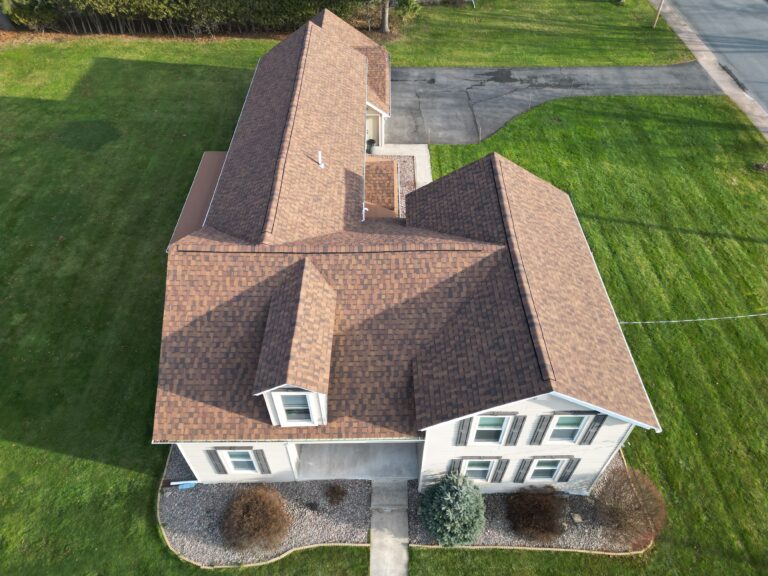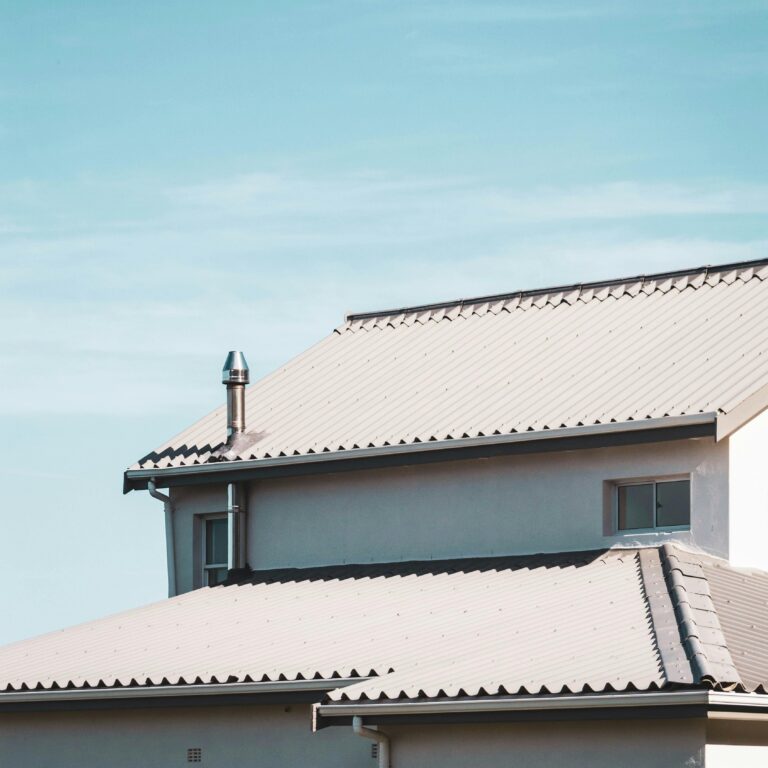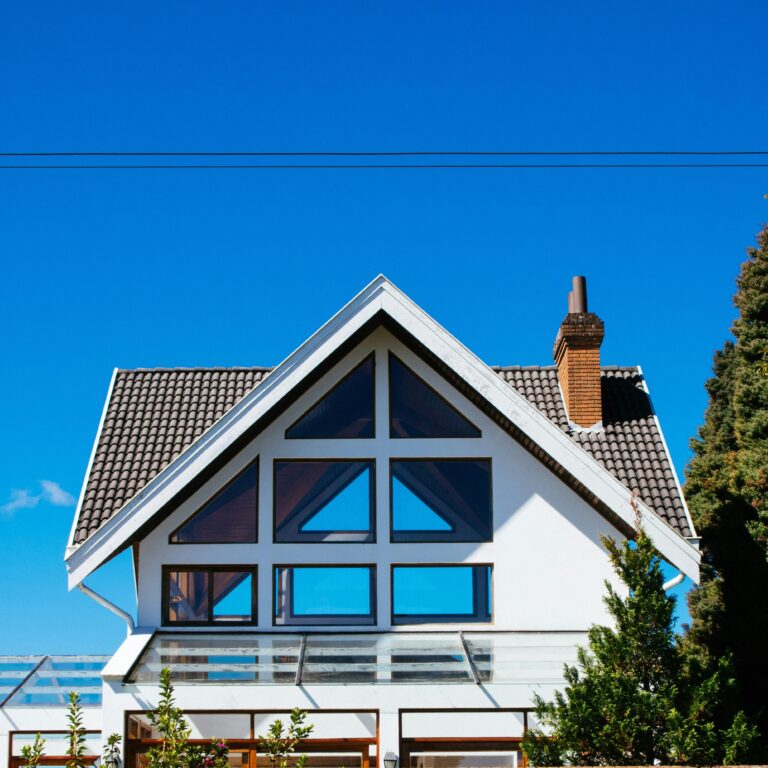When it comes to choosing the best roofing option for your home, it’s important to be aware of the different types of roof shingles available. Here at Campany Roofing, we understand that your roof installation or replacement is one of the most important purchases for your home. So, we want you to know the type of shingles you choose can greatly impact your roof’s longevity, appearance, and cost.
In this guide, we’ll dive into the most popular roof shingle types, their pros and cons, and help you decide what types of roof shingles are best for your home.

Asphalt Roof Shingles
The most common type of roof shingles in the U.S. are asphalt shingles. They are popular due to their affordability, ease of installation, and relatively long lifespan. Furthermore, asphalt shingles come in several varieties, each with their own unique features.
3 Tab Shingles
3 tab shingles are one of the most basic types of asphalt shingles. These shingles are lightweight and have a flat, uniform appearance. They are named after the three tabs or cutouts along their lower edge.
Pros and Cons of 3 Tab Shingles
Pros:
- Lightweight
Cons:
- Less durable than other types of shingles
- Shorter lifespan (around 20 years)
- Susceptible to wind damage
- Hard to source these days
- More labor intensive to install
- Only a few colors available
Architectural Shingles
Architectural shingles, also known as dimensional or laminate shingles, are thicker and more durable than 3 tab shingles. They offer a more textured and multi-dimensional appearance. Additionally, they often resemble more expensive roofing materials, like wood or slate.
Pros and Cons of Architectural Shingles
Pros:
- More durable and longer-lasting (up to 30 years)
- Better resistance to wind and weather
- Adds depth and texture to your roof
- Very popular, so easy to source
- Affordable
- Many color options
Cons:
- Heavier, requiring stronger roof structures
Impact-Resistant Shingles
As the name suggests, impact-resistant shingles are designed to withstand extreme weather conditions, including hail and heavy winds. These shingles are reinforced with polymers or other materials, making them much tougher than standard shingles.
Pros and Cons of Impact Resistant Shingles
Pros:
- Highly resistant to hail, wind, and storm damage
- May lower homeowners insurance premiums
- Long-lasting
Cons:
- Higher upfront cost
- Fewer color and style options
COOL Shingles
COOL shingles are energy-efficient shingles designed to reflect more sunlight and absorb less heat. This helps to keep your home cooler, especially in warmer climates, and can reduce energy costs.
Pros and Cons of COOL Shingles
Pros:
- Reduces energy consumption
- Helps maintain lower indoor temperatures
- Environmentally friendly
Cons:
- Higher cost than traditional asphalt shingles
- Limited style options

Metal Roofing
Metal roofing is also becoming more popular in the U.S., especially for those looking for a long-lasting and durable solution. While not technically shingles, metal roofing comes in shingle-like forms for those who want the look of traditional shingles with the benefits of metal.
Metal Shingles
Metal shingles are made out of aluminum or steel. They are lightweight, rust-resistant, and energy-efficient, making them a good choice for homes in coastal or rainy areas. They are also more resistant to fire and extreme weather conditions than traditional shingles.
Pros and Cons of Metal Shingles
Pros:
- Very durable
- Fire and corrosion-resistant
- Reflects heat, improving energy efficiency
- Can last 50 years or more
Cons:
- Prone to denting
- Higher cost than asphalt shingles
- Noisy during rain or hail
Standing Seam Metal
Standing seam metal roofing consists of vertical panels with raised seams that interlock to provide superior water and wind resistance.
Pros and Cons of Standing Seam Metal
Pros:
- Excellent durability and weather resistance
- Modern appearance
- Long lifespan
Cons:
- Very expensive
- Complex installation process

Other Types of Roof Shingles
Aside from asphalt and metal, there are other types of roof shingles that provide a range of aesthetics and functionality.
Wood Shingles (Shakes)
Wood shingles provide a natural, rustic look. They are usually made from cedar or redwood. Additionally, they offer excellent insulation.
Pros and Cons of Wood Shingles
Pros:
- Beautiful, natural appearance
- Good insulation
- Can last up to 30 years
Cons:
- Requires regular maintenance
- Susceptible to fire, mold, and insects
- Very expensive
Slate Tile
Slate is one of the most premium roofing materials, offering unmatched durability and a sophisticated look. Surprisingly, slate tiles can last over a century if properly maintained.
Pros and Cons of Slate Tile
Pros:
- Extremely long-lasting (over 100 years)
- Beautiful, elegant appearance
- Fire-resistant
Cons:
- Very expensive
- Heavy, requiring additional structural support
- Requires specialized installation
Synthetic Shingles
Synthetic shingles are made out of either rubber or plastic. They are durable, inexpensive, and energy-efficient, offering a modern solution to traditional roofing materials.
Pros and Cons of Synthetic Shingles
Pros:
- Affordable
- Highly durable and weather-resistant
- Easy to install
Cons:
- Limited color options
- Not as aesthetically pleasing as other materials
- Can warp or crack in extreme temperatures
When deciding which types of roof shingles are best for your home, consider factors like cost, durability, appearance, and the climate in your area. From asphalt shingles to more premium materials like slate and copper, each roofing option has its unique benefits. Whether you’re interested in types of asphalt shingles or exploring specialty options, understanding the pros and cons will help you make an informed decision that keeps your home protected for years to come. If you have any questions, feel free to give us a call or visit our FAQ.
